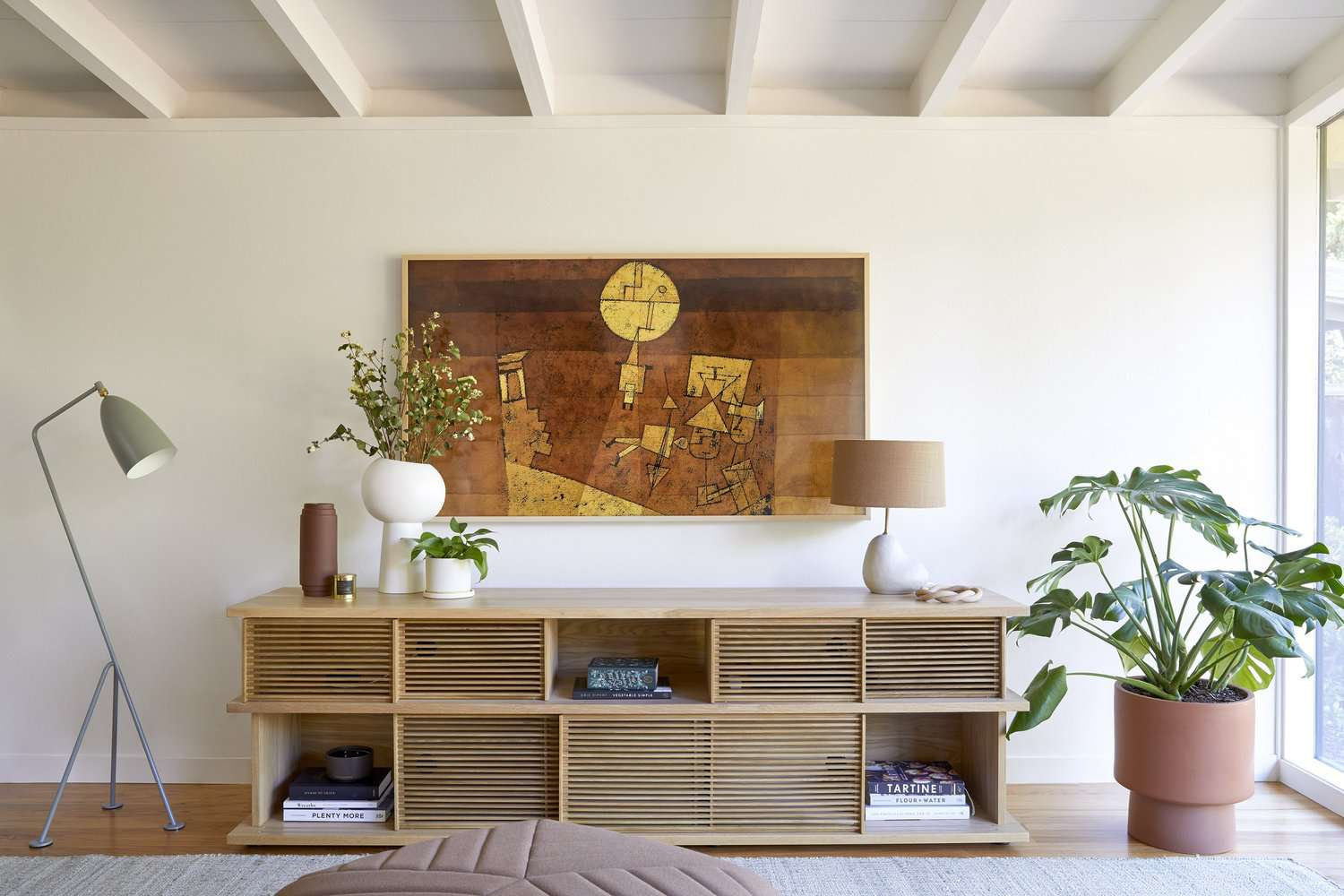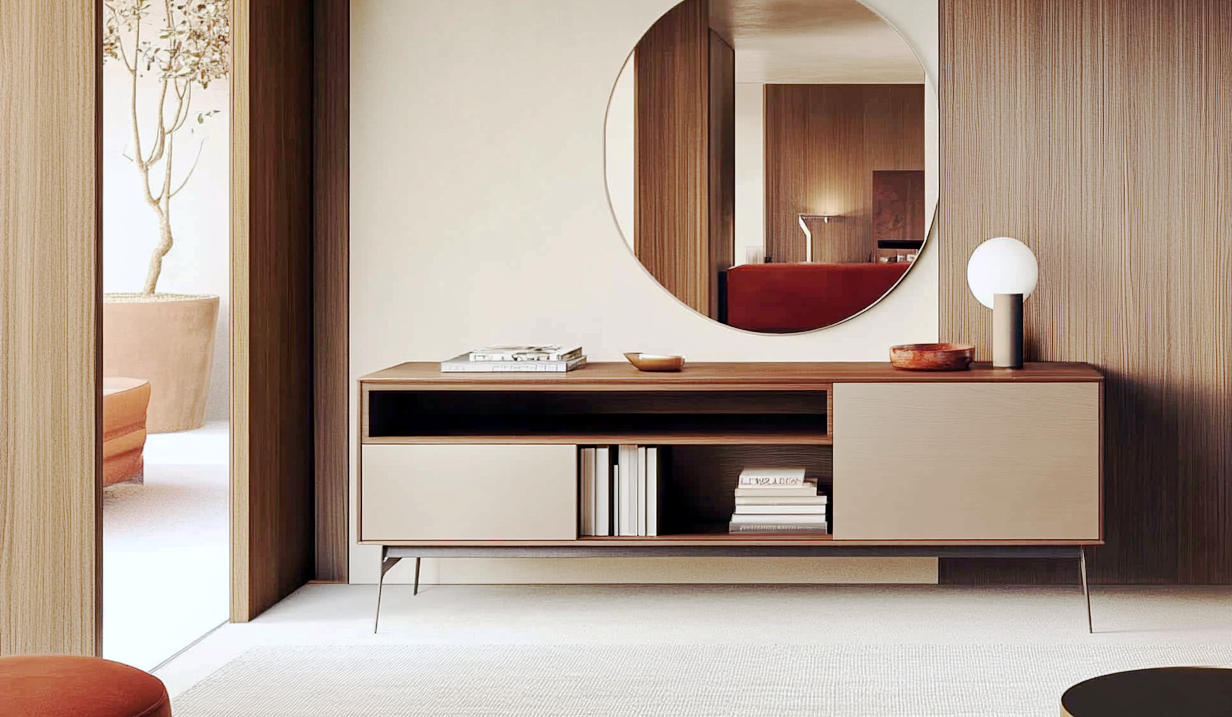Have you ever thought about the fact that your entryway is like the trailer to the full-length feature film that is your home? It’s the first scene people see, and it drops hints about everything else inside.
Whether your style leans maximalist, curated and chaotic, or you’re all about that calm, barely-there minimalism, the first few feet of your space matter more than you think. And if there’s one piece that can pull weight way beyond its size? A good madia, aka sideboard.
The thing is, people tend to treat entryway furniture like an afterthought: “I’ll just grab something cheap online, it’s just the hallway”. Nope. Bad move. If your madia looks like it was shipped in a cereal box, you’ll feel it every time you toss your keys down. You don’t even know a furniture brand that offers great sideboards, do you? Let me run through a few options: Cassina, Giorgetti and Porada, to name but a few.
So now you have no excuse. Let’s find out how to choose the right sideboard for your home. Because, yes, your entryway deserves a well-designed piece, not a wobbly placeholder.
What Are The Right Dimensions for a Sideboard?
Before you even start looking at finishes or colors, whip out the tape measure. The last thing you want is a sideboard that dominates the space or barely fits at all. Rule of thumb? You should be able to walk by it without doing the awkward sideways shuffle.
Measure your entryway (yes, actually measure it) and make sure you’ve got enough clearance to move comfortably. A standard depth for an entryway madia is around 16″–18″, but that depends on your space. Here’s a quick cheat sheet:
- Small entryway: Go for a slim, wall-mounted madia or a narrow-legged console.
- Medium to large entryway: Try a full-sized madia with cabinets and maybe even a mix of open shelving.
- Open-plan home: Consider using a madia to visually divide your entry from the rest of the room.
What Are The Best Materials for a Good Quality Sideboard?
Furniture made from low-grade particleboard will let you down faster than your high school group chat. It scratches easily, warps in humidity, and feels cheap because… well, it is. Solid wood, MDF with quality veneer, or lacquered finishes hold up better and feel way more luxe under your fingertips.
If you’re into that industrial or urban aesthetic, a metal and wood combo can add edge without feeling cold. For warmer, mid-century vibes, walnut or oak tones are your besties. And if you’re going minimal? Matte lacquer in neutral tones hits just right. Oh, and if you’ve got a dog or small kids, maybe skip the glass-front doors.
What Should I Look Out For When Choosing a Sideboard?
Good madias don’t just sit there. They do something. They hide clutter. They hold your go-to tote. They store all those sunglasses you swear you’re not collecting. And unless you’re really into trends, steer clear of overly funky silhouettes. You want something with personality, not a passing phase. Look for:
- Soft-close drawers and doors (trust me, you’ll thank yourself later)
- Cable management if you plan to put a lamp or charge your phone there
- Adjustable shelving so it actually adapts to your life
- A statement handle: yes, one handle can change the whole mood
What Are Some Color Ideas for a Sideboard?
A lot of people go beige in the entryway because they’re afraid of making a statement. But hear us out: this is the one area where a pop of color can totally elevate the room without overwhelming it. Color is powerful, especially in a space people experience for just a few seconds.
A bold madia in a deep forest green or cobalt blue can give your entryway instant attitude. Want something quieter? Go for dusty rose, clay, or classic black. Match it to your walls and it disappears into the architecture. Contrast it, and it becomes a conversation piece.
What’s the Best Sideboard According to Your Home Decor Style?

Your madia doesn’t need to match everything, but it shouldn’t feel like it got lost on the way to the dining room either.
- Scandi-style home? Go light wood, clean lines, no hardware.
- Modern loft? Black metal frame, dark wood doors, raw edges.
- Boho vibes? Rattan panels, curved corners, warm woods.
- Mid-century modern? Think lacquer, glass, marble insets. Stuff you’d see in a Milan showroom.
Impulse Buys Are for Snacks, Not Furniture
We get it. You move into a new place, and you want everything done now. But buying a low-quality madia just to “fill the gap” is a decision you’ll regret every time you walk past it. High-quality design takes time (and yeah, sometimes a little saving up).
But that’s okay. Wait a few months. Hunt around. Go vintage, go custom, or go designer, but make it count. The madia you pick now might be with you for a decade or more. Your entryway madia should be more than just a dumping ground for your mail and keys. It’s your welcome mat’s wingman, your home’s first impression. Choose one that tells your guests (and let’s be honest, yourself) that you care about quality, style, and how things feel when you walk through the door. Trust your gut, go for quality materials, and don’t settle for basic. Because in design (and in life) how you start sets the tone for everything that follows.

